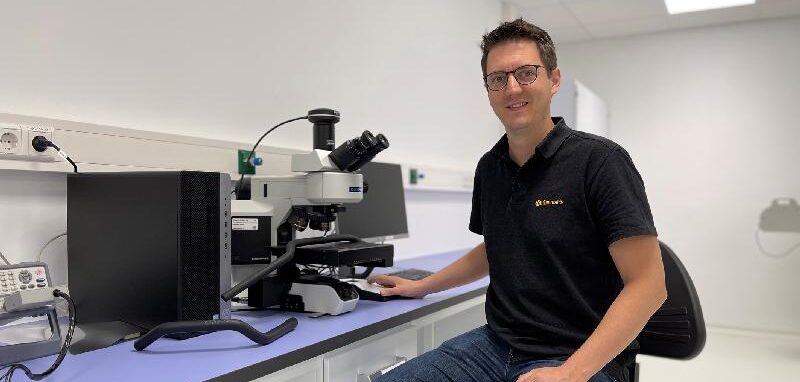Continental says it is working on incorporating printed electronics into rubber, as the company seeks to replace analog processes with digital alternatives.
“My focus here is on integrating intelligent systems and networks. In particular, we are looking at the interface between components made of elastomers and the integration of electronics,” explained Tim Wolfer, project manager and coordinator of research projects for functional printing processes.
The US$3.4m, three-year sensIC project is investigating the use of integrated sensor technology based on printed electronics. Integrated temperature sensors can be applied for use in situations where thermal management is needed, and Wolfer hopes that the process and technology will be used within Continental’s tire business and a range of other sectors.
“It feels like in a startup. We’re very flexible and can quickly develop and adapt our processes; there’s a great dynamic here. At the same time, we can build on the power of the entire Continental Group,” commented Wolfer.
Wolfer holds a doctorate in mechanical engineering and first came across functional printing when writing a dissertation on the additive manufacturing of optical systems. He explained, “Now I’m happy to be able to contribute this knowledge to the research and development of a technology group.” Since autumn 2020, he has been responsible for research projects at Continental’s Center for Functional Printing Technologies.
“In theory, we can use printed electronics anywhere,” he said. “The product range is virtually infinite and perfectly tailored to Continental’s strategy: making products intelligent and using them to develop new business models and mobility services.”
Wolfer went on to explain the many challenges he faced when trying to further the technology: “The biggest challenge is not only to investigate the innovative technical systems on a laboratory scale but also to actually manufacture them on an industrial scale with our colleagues in Hamburg later on.”
He continued, “The systems themselves have enormous complexity on a small scale due to the fine and sensitive structures. As part of the project, for example, one partner is designing and producing a specific silicon chip for us. In the subsequent production facility in Hamburg, however, we are suddenly confronted with challenges such as thermal expansion, solvents, and high pressures and temperatures.”
When the sensIC project began, Wolfer and the Continental team had to estimate the technical requirements needed at the end, so that the right materials and concepts were chosen from the get-go. “It was a challenge to get all the technical goals lined up. But the technical concept is now complete and the project’s running at full speed,” he concluded.


